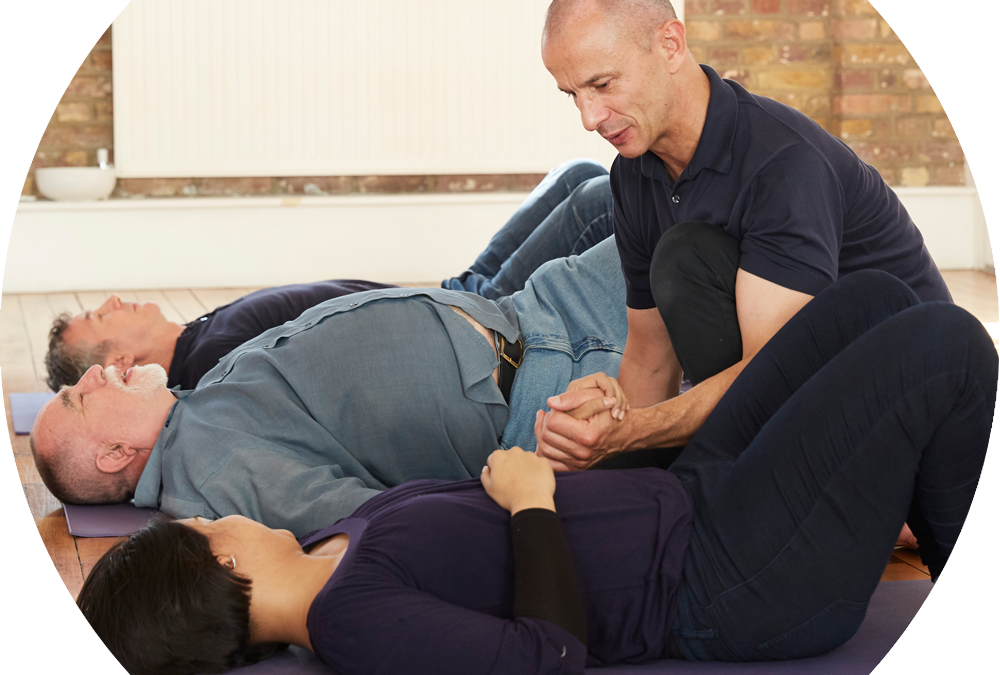Shaking can release long-held tension patterns and promote new feelings of connection and ease. It is a novel stimulus to the central nervous system. New stimuli, approached with safety and curiosity, can support learning and growth.
TRE®, Tension and Trauma Releasing Exercises, are a simple set of exercises that trigger a natural shaking reflex in the body.
The psychology of trauma is complex, the physiology is relatively simple. In trauma old parts of the brain are fixed in defence cascades of ‘fight-or-flight’ or ‘freeze’. TRE® is a safe, natural process to re-boot overprotective reflexes.
Here are five ways that TRE shaking can help to heal trauma:
1 It helps you to move from dissociation to embodiment.
Dissociation is the essence of trauma. For many people who have experienced trauma, it’s the hidden mystery at the heart of their experience. It’s a very confusing state, where you can feel numb, disconnected, and empty.
Frequently, you feel stuck, unable to think or act. Often, it feels horrible and scary. Sometimes, however, dissociation can feel safe, floaty, and expansive, as though you’re no longer bound by your body.
The main chemicals of dissociation are endorphins — your body’s natural painkillers. For many of us, there is a seductive, cozy quality to dissociation. It can seem easier to not feel and to tune out, rather than to remain present.
The opposite of dissociation is being grounded — a beautiful, earthy word that describes being present and connected. As you’ll discover, groundedness is a state in which you’re at home in your body, and observant of the space around you.
2 It reconnects you to your body – to heal trauma, you don’t need to understand or to remember. (You also don’t need to talk about your most difficult experiences).
At the heart of TRE is profound trust in the wisdom of the body. Trauma is seen as primarily a physiological response rather than a psychological problem. TRE shaking is a bottom-up approach, where you heal trauma by reconnecting to your body. When you switch off protective reflexes of fight-or-flight or freeze, you free yourself from intrusive thoughts, pain, and stuck emotions.
3 It’s a natural, animal reflex.
Insights from ethology – the study of animal behavior — explain how shaking is a mammalian reflex for discharging stress. Think of a duck on a lake which has been chased by a dog – once the dog is back on the lead, the duck shakes vigorously. This is a natural way to release the stress from the potential attack.
4 It teaches how to be with intense feelings — without becoming overwhelmed.
Shaking is a powerful stimulus to help you release chronic stress and tension. It helps you wake up your body, and by learning how to turn on, pay attention to, and, turn off tremors you develop skills for being with intense sensations and feelings.
5 It’s helps us learn how to go slowly.
All modern trauma therapists focus on teaching how to regulate intense feelings. It’s now well understood that going slow is actually the quickest way to heal trauma.
Feeling is difficult, yet it’s a skill that can be taught. Often you’ll need support and community to help you co-regulate before you can self-regulate. If things are feeling too strange, too quick, too much, or too floaty during the tremor process — you can learn to put the brakes on and stop.
By learning to regulate the tremors of TRE, you can learn to go slowly and you discover how to regulate all feeling states.
TRE is about you healing yourself. It’s a powerful tool to support your ongoing healing journey. There are times to develop your strength and resilience as you learn to let go. Other times, you’ll want to go gently, slowly building your capacity to feel.
What people are saying about studying TRE with Steve:
“a useful life skill to continue to use and build on in the future.”
I liked the balance of theory and practice and the carefully facilitated shaking sessions. It felt very safe and encouraging. It was great to have firsthand experience of TRE and something I would also recommend to friends, family, and clients. I feel I have a useful life skill to continue to use and build on in the future.
— Brenda Barrass-Pay, psychotherapist
“My hips and pelvis have opened up…”
My hips and pelvis have opened up and loosened up in a way they haven’t felt for years, especially since childbirth.
— Kate Munden, EFT and NLP practitioner
“Really learned a lot and really enjoyed it.”
The depth and pace of the course was well managed. The concepts were delivered in a very accessible way, accommodating different learning styles. It was supported by a great team. Really learned a lot and really enjoyed it.
— Lucy Levens, yoga teacher and advocate of sexual violence survivors
Upcoming TRE trainings:
Tension and Trauma Releasing Exercises (TRE®):
TRE Certification Training ONLINE:
Module 1 Online: 28-29 Jan 2023
Module 2 Online: 21-22 Jan 2023 or 13-14 Apr 2023
Module 3 Online: 13-14 Dec 2022 or 15-16 Apr 2023
TRE Certification Training LONDON:
TRE Intro Day London: 11 Dec 2022 or 23 Jan 2023 or 31st Mar 2023
NEW TRE Certification Training IRELAND with Susan Porter:
TRE Module 1 Dublin: 18-19 May 2023
TRE Module 2 Dublin: 10-11 Jul 2023
TRE Module 3 Dublin: 13-14 Nov 2023



Hi,
Can I also participate in the introduction day when I’m not a professional and just want to learn for myself?
Ingrid
Interested.